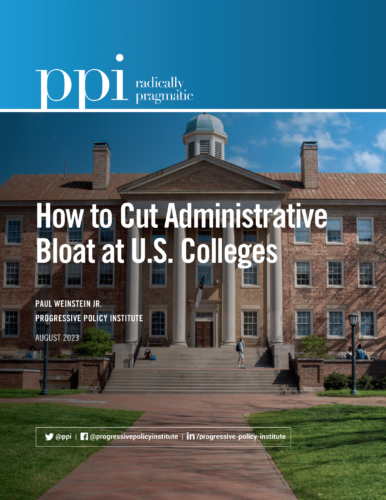“We have a Belief Gap in education.” I uttered those exact words from the main stage of the Smithsonian’s Institute’s Hirshhorn Museum and Sculpture Garden for the 2023 Smithsonian National Education Summit.
The summit came at a time when the country was becoming more and more divided along political lines on the topic of education and the teaching of American history. In states like Florida and Texas, elected and appointed leaders in the governor’s office, state legislature, and state board of education introduced and passed laws restricting the teaching of parts of American History that tell the full story of the experiences of marginalized groups like African-Americans, Jewish Americans, and members of the LGBTQ community.
Joining the first African-American Secretary of the Smithsonian Institute to keynote the National Education Summit was an extreme honor for me, especially at a time when educators and parents grapple with the teaching of American history…the good and the bad.
Dr. Lonnie Bunch is not only the first African-American to serve as Secretary of the Smithsonian, he’s also the first historian. As Secretary, Dr. Bunch oversees 21 museums, 21 libraries, the National Zoo, numerous research centers and several education units and centers. Dr. Bunch’s is most famous for founding the Smithsonian’s National Museum of African American History and Culture.
Dr. Bunch and I were joined by Jermar Rountree, the D.C. Teacher of the Year, on the panel. Rountree is a health and physical education teacher at Center City Public Charter School, Brightwood Campus. In the Center City network, Rountree serves as the District teacher lead for the physical education and health department.
This year’s Summit focused on the theme “Together We Thrive: Fostering a Sense of Belonging” and included four learning tracks: Life on a Sustainable Planet, STEAM Education, Reckoning with Our Racial Past, and An Integrated Arts Education.
The panel was moderated by Monique M. Chism, PhD, Under Secretary for Education for the Smithsonian Institution. Dr. Chism’s questions centered on the importance of diversity in teaching and its impact on “fostering belonging” for students.
The Summit attracted thousands of educators from across the nation, including teachers, curriculum specialists, librarians, state education agencies, administrators, and museum and cultural educators. The debate over how to teach American history and when certain parts should be taught is one these summit participants came to Washington to better understand.
The Summit was also an opportunity for me to discuss new research highlighting the impact of teacher diversity but also Collective Teacher Efficacy or the power of a teacher’s belief in their student’s ability and that impact that belief has on student achievement.
I used the summit to highlight the relationship between the teaching of American history and America’s belief gap in education when I said, “teachers don’t believe Black students can succeed and parents don’t believe White students are capable of learning the entirety of American history without internalizing the wrongs of the worst of us. Believe in our students.”
The laws passed in Florida and Texas to restrict the teachings of America history, laws that would criminalize teachers and villainize parents, also subjugate students to an inferior education and make them less prepared for full citizenship.
I take pride in my knowledge of my own history and the impact access to a quality education meant to my family and life outcomes for my relatives. The panel gave me an opportunity to share the story of my great-grandparents, Beverly and Martha Valentine. As co-founders of the Carroll-Boyd Rosenwald School in Mecklenburg County, Virginia, my great-grandparents joined a long line of African-Americans who partnered with the Julius Rosenwald Fund to create nearly 5,000 schools throughout the South.
The historical significance and impact of Rosenwald schools is showcased in not one, but two, exhibits at the Smithsonian’s National Museum of African American History and Culture where artifacts from The Hope School in Pomaria, South Carolina are displayed.
The legacy of Rosenwald schools live on in schools today that give school leaders more autonomy in how they are run…charter schools. Stephanie Deutsch, granddaughter in-law to Rosenwald and author of “You Need a Schoolhouse: Booker T. Washington, Julius Rosenwald, and the Building of Schools for the Segregated South,” was asked about the modern-day equivalent of Rosenwald schools and she replied “charter schools.”
Sessions from this year’s summit were produced in collaboration with the Council for Chief State School Officers, D.C. Public Schools, Ford’s Theatre, the Library of Congress, National Council for Teachers of English, National Council for the Social Studies, the National Endowment for the Arts, the National Science Teaching Association, North American Association for Environmental Education, and The Professional Development Collaborative at Washington International School.
Video of full session can be viewed on Smithsonian Education YouTube Channel.
Curtis Valentine is the Co-Director of the Reinventing America’s Schools Project at the Progressive Policy Institute.






